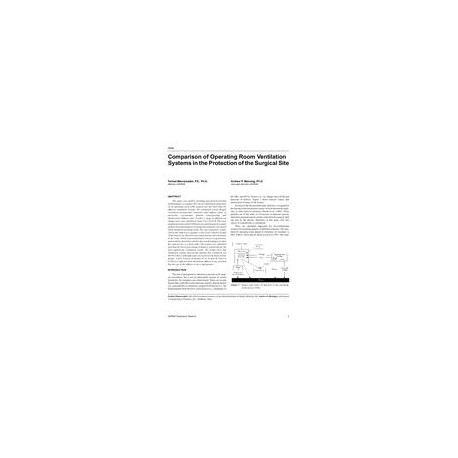No products
 View larger
View larger 4549 -- Comparison of Operating Room Ventilation Systems in the Protection of the Surgical Site
M00003166
New product
4549 -- Comparison of Operating Room Ventilation Systems in the Protection of the Surgical Site
Conference Proceeding by ASHRAE, 2002
Farhad Memarzadeh, P.E., Ph.D.; Andrew P. Manning, Ph.D.
In stock
More info
Full Description
This paper uses airflow modeling and particle-tracking methodologies to compare the risk of contaminant deposition on an operating room (OR) surgical site and back table for different ventilation systems. The ventilation system designs considered incorporated commonly used diffuser types, in particular, conventional, laminar, nonaspirating, and displacement diffuser types. Further, a range of different air change rates were considered, from 15 to 150 ACH. The room equipment layout and distribution was agreed upon by a panel of physicians and engineers as being representative of a typical newly designed operating room. The type of particle considered in this study was a squame, or skin scale, which is around 10 microns in size. Particles were released from three locations in the room, which represented likely sources of generation, and tracked to determine whether they would impinge on either the surgical site or a back table. The results were tabulated such that the lowest percentage of impacts would indicate the most appropriate ventilation system. The results show that ventilation systems that provide laminar flow conditions are the best choice, although some care needs too be taken in their design. A face velocity of around 30 to 35 fpm (0.15m/s to 0.18m/s) is sufficient from the laminar diffuser array, provided that the size of the diffuser array is appropriate.
Units: Dual
Citation: ASHRAE Transactions, vol. 108, pt. 2

